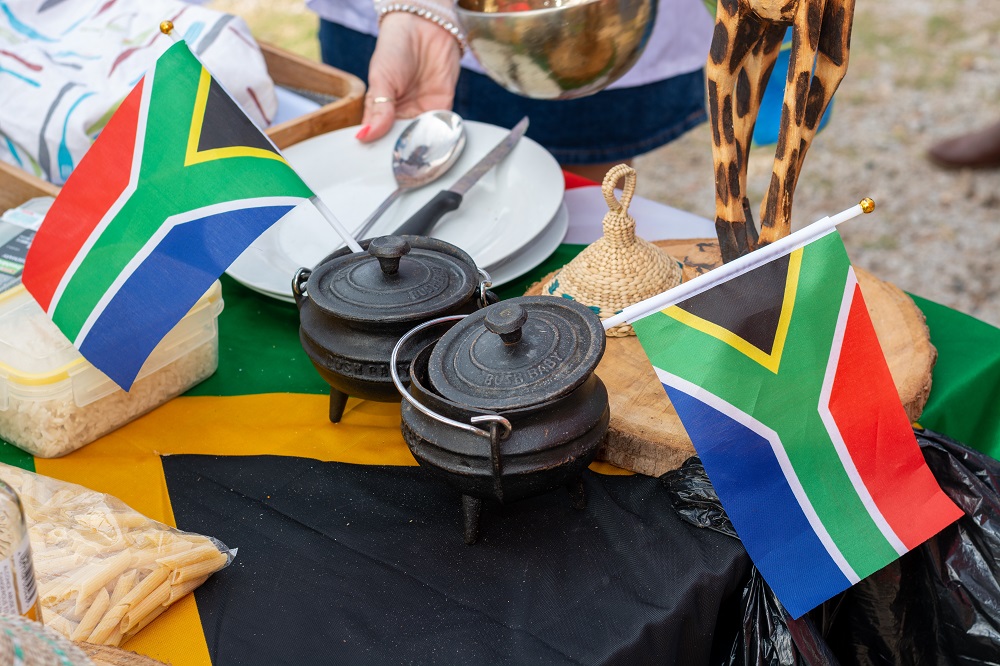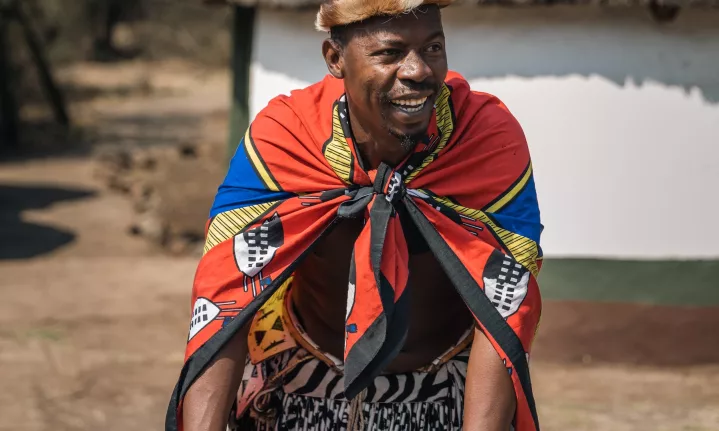Little Known Facts About South African Culture Today.
Little Known Facts About South African Culture Today.
Blog Article
The 6-Second Trick For South African Culture Today
Table of ContentsGetting The South African Culture Today To WorkSouth African Culture Today Things To Know Before You Get ThisWhat Does South African Culture Today Mean?How South African Culture Today can Save You Time, Stress, and Money.Some Known Details About South African Culture Today The Ultimate Guide To South African Culture Today
A matter of relevance in Zambian towns is the passing away of loved ones. All members of the village put money, time and initiative together for the funeral of the deceased.Throughout the mourning period; guys remain outside the residence and the females remain inside the residence of the deceased. After talking about the departed, the town walks to the place of burial to state their last bye-byes. Songs and dancing is a very vital aspect of the Zambian society. The different tribal units have their very own dancing forms; however, makishi is typical amongst all tribes.
How South African Culture Today can Save You Time, Stress, and Money.
When it comes to songs, drums are used the most, with a selection of drumming ceremonies. In Zambia, bulk of individuals are Christian; Protestant and Roman Catholic. There are little groups of Muslims and Hindus, with the rest complying with local native tribal ideas.

South African heritage and society is greatly varied, and includes numerous different teams of individuals that each have their very own practices and beliefs. Having such a diversity of people and cultures is what makes South Africa so special. In real feeling of the expression, we are a rainbow country.
South Africa has approximately three hundred thousand Portuguese people living in it. Making it the 7th on the list of countries with the most Portuguese people in it outside of Portugal. Portuguese is not just a society, yet it is additionally a language and a race. Portuguese individuals stem from the nation of Portugal in Europe, nevertheless, because of Portugal (like numerous other countries in Europe) exploring the globe and conquering other countries during the 15th 20th centuries, South Africa has what we call Portuguese South African's living in it.
Getting The South African Culture Today To Work
Among the popular features of the topography is a plateau that covers virtually two thirds of the facility of the country. The plateau complicated rises toward the southeast, where it culminates in the Drakensberg variety, component of an escarpment that separates the plateau from the seaside locations. The Drakensburg consists of Champagne Castle, the highest possible top in the nation.
The region north of the Witwatersrand, called the bushveld, slopes downward from eastern to west towards the Limpopo River, which creates the worldwide boundary. The western area of the plateau, the middleveld, likewise comes down towards the west and varies in altitude in between the highveld and bushveld. Between the Drakensburg and the eastern and southerly coast, the land descends to the sea.
Nearer the coastline there is a low-lying level called the eastern lowveld. Southwest of the plateau the country ends up being considerably extra arid, offering method to the stony desert of the Great Karroo, approached the eastern by the reduced, better watered plateau of the Little Karroo. Dividing the completely dry southerly interior from the sandy littoral of the southern coastline and West Cape is another reference range, the Langeberg.
The South African Culture Today Statements
The nation's racially, ethnically, and politically divided background has actually created national and subnational symbols that still function as symbols of the country, and others icons that are approved only by specific groups. The monoliths to white inhabitant occupation and political prominence, such as the Afrikaner Voortrekker ("pioneer") Monument in Pretoria and the Rhodes Monolith recognizing the British colonial empire home builder and Cape head of state Cecil Rhodes, continue to be sectarian signs.
The very first contemporary inhabitants were the San ("bushman") hunter-gatherers and the Khoi ("Hottentot") peoples, that rounded up livestock (South African culture today). The San may have been existing for countless years and left evidence of their presence in countless old cave paints ("rock art"). Bantu-speaking clans that were the forefathers of the Nguni (today's amaZulu, amaXhosa, amaSwazi, and vaTsonga individuals) and Tswana-Sotho language groups (today's Batswana and Southern and Northern Basotho) moved below east Africa as early as the fifteenth century

Both former republics of the Orange Free State and Transvaal (South African here are the findings Republic) were pop over to this web-site developed by Afrikaner inhabitants who defeated and dispossessed the Basotho and Batswana. Lesotho would certainly have been forcibly integrated into the Orange Free State without the extension of British protection in 1869. The utmost marriage of the country arised from the South African Battle (18991902) between the British and the 2 Afrikaner republics, which minimized the nation to mess up at the start of the twentieth century.
Afrikaners historically considered themselves the only true South Africans and, while providing full citizenship to all citizens of European descent, denied that condition to individuals of shade till the democratic shift of 1994. British South Africans preserve a feeling of cultural and social link to Great Britain without compromising their identification as South Africans.
5 Easy Facts About South African Culture Today Described
The diversity and fragmentation within ethnic groupings and the balance of tensions in between those teams throughout the twentieth century prevented interethnic civil conflict. While intergroup stress over resources, privileges, and political prominence continue to be, those disputes are as likely to pit Zulu versus Zulu as Zulu versus Xhosa or African versus Afrikaner.
From colonial India, British vendors and administrators brought the curved metal decorative roofings and slim lace work columns that still epitomize the terraces of cottages in towns and cities throughout the country. Residences of praise add a vital building element even in the tiniest communities. Along with the skyrocketing steeples and classic stonework of Afrikaans Dutch Reformed churches, Anglican churches, synagogues, mosques, and Hindu temples give range to the religious architectural scene.

Butchering and the brewing of traditional cereal beer are essential in protecting the engagement and goodwill of the ancestors who are taken into consideration the guardians of good luck, success, and health. Indian communities preserve their indigenous cooking traditions and use them on Islamic and Hindu ritual and ceremonial occasions. Afrikaners and Coloured individuals collect at weekend breaks and unique events at multifamily bbqs called braais, where community bonds are strengthened.
Since this was the key economic enterprise of both black Africans and white colonists, dispute between those teams fixated the possession of grazing land and livestock. In 1867, the largest diamond deposits in the globe were found at Kimberley in the west main location. The wide range from those areas aided fund the exploitation of the best gold coral reef on the planet, which was uncovered on the Witwatersrand in 1886.
Some Known Facts About South African Culture Today.
This resulted in misconceptions and intentional misrepresentation in the transactions of white settlers and federal government authorities with African chiefs during the early american period (South African culture today). In the facility of African reserves, some facets of common and primarily "tribal trust fund" land period were preserved, and also in white backwoods, types of communal period were still practiced in locations with African areas
After the democratic transformation of 1994, programs for land restitution, redistribution, and reform were set up, yet development has been slow-moving. The white minority still manages eighty percent of the land. In the wake of farming land invasions in Zimbabwe, the Division of Land Affairs has actually promised to speed up land redistribution.
Report this page